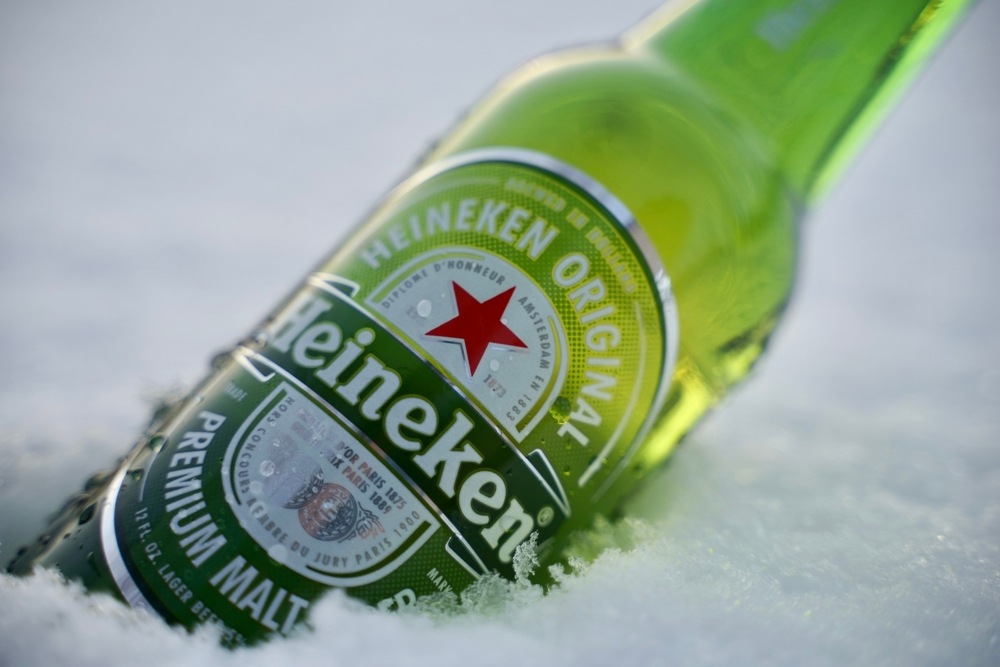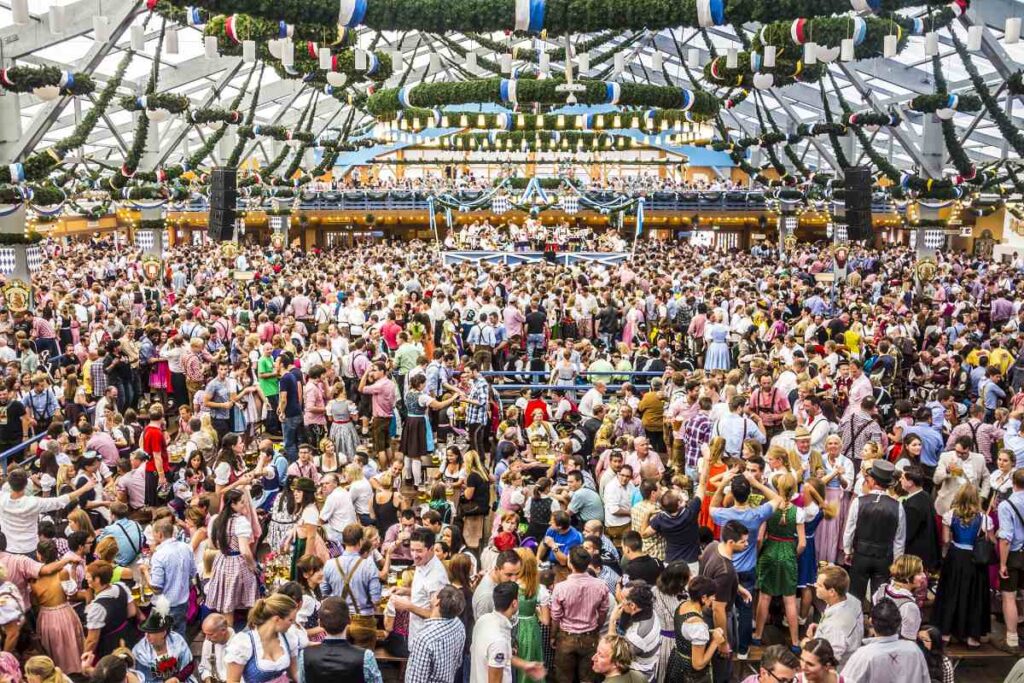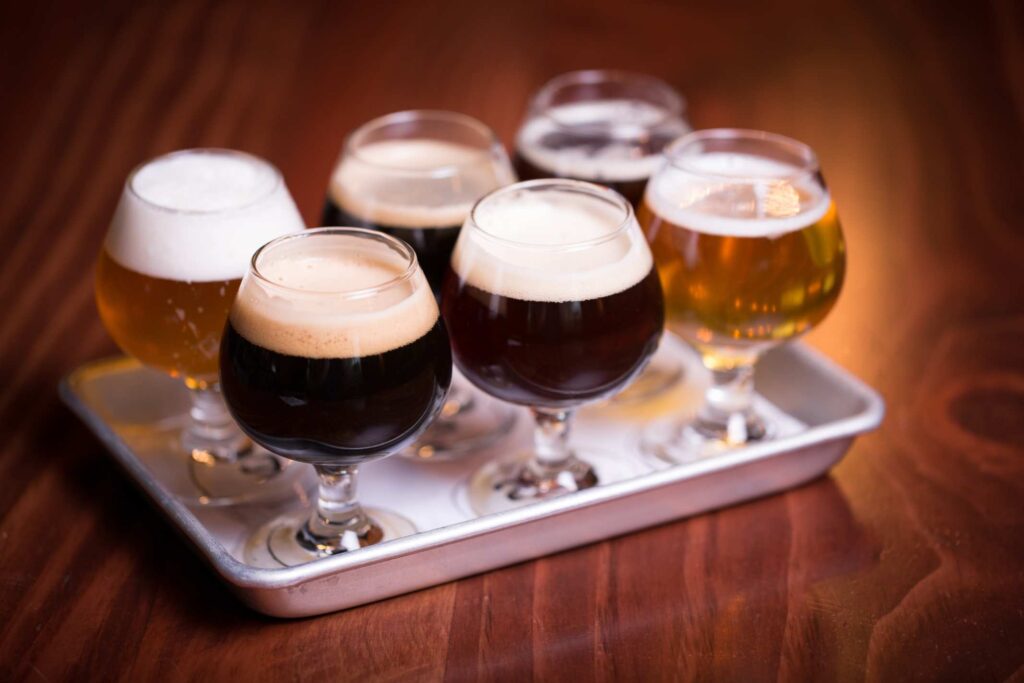What is Beer? In this article, you will learn interesting facts about beer.
Beer, an ancient and beloved beverage, continues to intrigue and delight people across the globe. With its widespread consumption and rich history, there is no shortage of fascinating facts surrounding this popular drink. As the third most popular drink on Earth, following water and tea, beer has been deeply ingrained in human culture, with brewing and drinking traditions that predate even written language.
The origins of beer can be traced back as far as 5,000 BC, solidifying its status as one of the world’s oldest beverages. While the brewing process has evolved over thousands of years, the essential ingredients – water, malted barley, hops, and yeast – have remained remarkably constant. As you explore some interesting facts about beer, it’s evident that this well-loved drink continues to make a splash in modern times as much as it did in ancient civilizations.
Table of Contents
History of Beer

Sumerians and Mesopotamia
The history of beer can be traced back to ancient Mesopotamia, where the Sumerians were among the first to produce this beloved beverage. Around 4000 BCE, they developed a method to ferment grains and created a pictogram that records the brewing process. The Sumerians drank beer from cups or large pottery jars using reed straws.
Babylonians
After the Sumerians, the Babylonians continued the tradition of beer brewing. They refined the process and developed various beer recipes. In their society, beer was considered an essential part of the diet and even had roles in religious ceremonies.
Middle Ages
During the Middle Ages, beer became a staple in European diets, particularly in monasteries where monks brewed beer for sustenance. Monasteries also served as centers for brewing knowledge and innovation, and they often developed their own unique beer recipes.
Reinheitsgebot and German Beer Purity Law
In 1516, Duke Wilhelm IV of Bavaria established the Reinheitsgebot – the German Beer Purity Law to ensure the quality and safety of beer. This law dictated that only water, barley, hops, and yeast could be used in the production of beer. The Reinheitsgebot had a lasting impact on the brewing industry and set the standard for beer purity, influencing many brewing practices to this day.
Prohibition
Following the 18th amendment to the United States Constitution in 1920, the sale, production, and transport of alcohol became illegal, marking the beginning of the Prohibition Era. During this time, the beer industry suffered a significant decline, but it re-emerged stronger than ever after Prohibition ended in 1933.
Modern Craft Beer Movement
The craft beer movement began to gain momentum in the late 20th century, spurred by changes in legislation and a growing interest in artisanal products. Small, independent breweries flourished, and the variety of beer styles and flavors exploded. Today, the craft beer movement continues to evolve and generate new trends, making it an exciting time for both brewers and beer enthusiasts alike.
Beer Brewing Process

Ingredients
Beer is primarily brewed using four key ingredients: water, barley, hops, and yeast. Water makes up a significant part of the final product, and the minerals found in water can influence the overall taste of the finished beer. Barley, after being malted and milled, provides the fermentable sugars needed for fermentation. Hops give beer its unique bitterness and aroma, and there are numerous varieties available to brewers. Finally, yeast plays a pivotal role in fermentation, as it consumes the sugars and produces alcohol and carbon dioxide.
Fermentation
Fermentation is a crucial step in the beer brewing process, during which the yeast converts the fermentable sugars from the malted barley into alcohol and carbon dioxide. There are two primary types of fermentation: top fermentation and bottom fermentation. Top fermentation, used in the production of ales, occurs when the yeast rises to the top of the fermenting product, creating a foam layer.
This process generally occurs at warmer temperatures, around 60-68°F (15-20°C). On the other hand, bottom fermentation is employed in the making of lagers, wherein the yeast sinks to the bottom of the vessel during fermentation. This process occurs at lower temperatures, around 45-55°F (7-13°C).
Styles and Types of Beer
There is a wide variety of beer styles and types available, with ales and lagers being the two major classifications.
Ales are a type of beer brewed using top fermentation and are generally fruitier and more robust in flavor. Some common styles of ales include:
- Stout: A dark, rich beer characterized by its roasted, coffee-like flavor
- Porter: Similar to a stout, but lighter in body, featuring roasted malt flavors
- India Pale Ale (IPA): A hoppy, bitter beer originally brewed with extra hops to preserve it during long sea voyages
Lagers are brewed using bottom fermentation and tend to be lighter and crisper in taste. Some popular styles of lagers include:
- Pilsner: A pale, golden lager with a delicate balance of malt sweetness and hop bitterness
- Dopplebock: A strong, malty lager originating from Germany
- American Lager: A light, easy-drinking beer popular in the United States
These are just a few examples of the numerous beer styles and types available, showcasing the versatility and creativity involved in the brewing process.
Famous Breweries and Brands

Guinness
Guinness, founded in 1759 by Arthur Guinness in Dublin, Ireland, is a widely recognized brand known for its rich, dark stout. To this day, the brewery retains its iconic St. James’s Gate brewery location and has expanded to brewing facilities around the world. The famous Guinness Draught is appreciated for its unique, creamy head and distinct flavor, achieved through the use of roasted barley.
Budweiser
Budweiser is an American-style pale lager produced by Anheuser-Busch. First introduced in 1876, this beer has roots that date back to the European settlement of St. Louis, Missouri, in the early 19th century. The Budweiser Clydesdales were first introduced in 1933 to commemorate the end of Prohibition in the United States, and these horses represent the enduring legacy of this historic brand.
Heineken
Heineken, a Dutch brewing company, was established in 1864 by Gerard Adriaan Heineken in Amsterdam. The Heineken Experience in Amsterdam offers tours to showcase the brand’s history and the brewing process. Known for its green bottle and red star logo, Heineken has become a global beer brand enjoyed by millions.
Coors
Coors, originating from the foothills of the Rocky Mountains in Golden, Colorado, was founded by Adolph Coors in 1873. The brewery is known for using Rocky Mountain spring water in its brewing process, which lends a distinct and pure taste to its beers. Coors Light, a low-calorie beer, has gained popularity since its introduction in 1978.
Anheuser-Busch InBev
Anheuser-Busch InBev is a leading global brewery, owning numerous beer brands including Budweiser, Stella Artois, and Corona. Formed after the 2008 merger of Anheuser-Busch and Belgian-Brazilian brewery InBev, AB InBev has become one of the largest beer companies in the world, with operations in more than 50 countries.
Weihenstephan
Weihenstephan, considered the world’s oldest brewery, can trace its origins back to 1040. Located in Freising, Germany, Weihenstephan has been brewing beers for almost a millennium. The Weihenstephan Brewery is dedicated to maintaining its rich history and traditions while also incorporating modern techniques and advancements to produce high-quality beers beloved by connoisseurs and casual drinkers alike.
Global Beer Culture

Germany
Germany has a rich beer culture, with over 1,300 breweries producing a variety of styles. The most famous is the Oktoberfest celebration, which takes place annually in Munich. Oktoberfest is a significant part of German culture, attracting tourists from all over the world. German beer follows the Reinheitsgebot, also known as the German Purity Law, which dictates that only water, barley, and hops can be used in beer production.
Czech Republic
The Czech Republic is renowned for its pilsner-style beers. Pilsner Urquell, the first pilsner beer, was brewed in Plzeň in 1842 and is still popular today. Czechs are known for their love of beer, and the country often tops the list for beer consumption per capita.
United States
The United States beer industry has seen a surge in craft beer production over the past few decades. According to the Brewers Association, the number of breweries in the U.S. has grown from a few hundred in the 1980s to over 8,000 in 2021. American craft breweries produce a wide variety of beer styles, from traditional lagers and ales to more experimental brews.
Belgium
Belgian beer culture is characterized by its vast variety, with over 1,600 different beer brands and numerous styles, including Lambics, Dubbels, Tripels, and Quadrupels. Many Belgian beers are brewed in monasteries following centuries-old traditions. Some of the most famous Belgian beers include Westvleteren, Chimay, and Leffe.
China
China is the world’s largest producer and consumer of beer, with Tsingtao and Snow being some of the most popular domestic brands. Chinese breweries primarily produce pale lagers, which are often light in flavor and have a lower alcohol content compared to other countries beer styles.
Japan
In Japan, beer is closely linked to izakaya culture, casual pubs where beer is enjoyed alongside a variety of small dishes. The country has a thriving beer scene, with major breweries such as Asahi, Kirin, and Sapporo, producing a range of light, crisp lagers. In recent years, Japan has also seen a rise in craft beer popularity, with smaller breweries experimenting with new and unique styles.
Beer Consumption and Production
Countries with the Highest Consumption
When it comes to beer consumption, the Czech Republic takes the lead as the country with the highest per capita intake. In 2017, the average US citizen over 21 consumed 26.9 gallons of beer, which is far behind the Czech Republic’s numbers. Even with this impressive consumption, the United States doesn’t make the top 10 list for overall beer drinking. Other countries, such as Austria and Australia, also have a high beer consumption rate.
In contrast, France is more renowned for its wine production and consumption, and Iran has strict religious restrictions on alcohol, resulting in significantly lower beer consumption rates.
Top Beer-Producing Countries
The United States is a major producer of beer, with 81% of all beer consumed domestically in 2021 being produced in the US, while 19% was imported from over 100 countries worldwide. Notable states for beer production include California, which is home to numerous craft breweries.
However, other countries also have strong beer-producing traditions. Bavaria in Germany is well-known for its rich beer culture and the wide variety of brews available. Besides the classic Pilsner style, which originated in the Czech Republic, other popular varieties include the following:
- Stout: A darker, richer beer often associated with Ireland
- Corona: A pale lager from Mexico, typically enjoyed with a slice of lime
Russia has a long history of beer production, starting with kvass, a low-alcohol, traditional Russian beverage made from fermented bread. Today, Russia is a significant player in the global beer market.
In summary, beer consumption and production vary significantly depending on the country and region, reflecting different cultural preferences and practices. From the Czech Republic’s high per capita consumption to the diverse beer styles like pilsner and stout, beer continues to be a fascinating and popular beverage worldwide.
Interesting Beer Facts
In this section, we will explore some fascinating facts about beer, covering aspects related to health benefits and risks, odd ingredients, and its relationship with technology.
Health Benefits and Risks
Beer, when consumed moderately, has been linked to numerous health benefits. For instance, it has been shown to potentially reduce the risk of kidney stones and support heart health. Despite these benefits, excessive beer consumption can lead to various health risks, such as liver damage, obesity, and addiction issues. It is essential to enjoy beer mindfully and in moderation.
Odd Beer Ingredients
Throughout history, brewers have experimented with a variety of unique ingredients in their beer recipes. For example, some breweries have created beers infused with tea, offering a refreshing twist on traditional ales. Other exotic ingredients include snake venom, which has been used to create potent and highly alcoholic brews.
Beer and Technology
In recent years, the beer industry has embraced technological advancements such as artificial intelligence (AI) and data science. AI has been utilized in various aspects of beer production, from optimizing recipes to predicting consumer preferences. In 2017, former President Barack Obama made headlines when he shared his White House honey ale recipe, which was subsequently analyzed and improved upon by data scientists from Denmark. This collaboration exemplifies the connection between beer, science, and technology in today’s brewing landscape.
In conclusion, beer is a versatile and fascinating beverage that offers numerous health benefits when consumed in moderation. Whether it’s beer infused with tea or snake venom, there are plenty of unique and exciting ingredients to try. Through advancements in technology, we continue to see innovative developments in the beer industry, ensuring that this age-old beverage continues to capture our attention and taste buds.
Conclusion
Beer has been an integral part of human history, with its origins dating as far back as 3500 to 3100 BCE. The brewing process has evolved over time, with various techniques and styles developed throughout the centuries. Today, beer is the most popular alcoholic drink in the world, with nearly 50 billion gallons consumed worldwide in 2016.
Historically, beer was considered safer to drink than water and has played a significant role in various cultural practices and events. For example, Oktoberfest originally started as a festival celebrating the marriage of the Bavarian Crown Prince Ludwig in 1810. The brewing process itself has its roots in Germany, where bottom fermentation began in 1420, marking a shift in yeast usage and fermentation styles.
The etymology of the word “beer” traces back to Slavic origins, derived from a verb meaning “to drink.” Given the diversity of beer styles, flavors, and brewing methods, it’s no wonder that beer remains a prominent fixture in our global culture. In fact, in 2017, the average U.S. citizen over 21 consumed 26.9 gallons of beer.
The vast and long-lasting popularity of beer is a testament to its enduring appeal and versatility as a beverage. With countless options to suit individual tastes and preferences, it is essential to remember that moderation and responsible consumption are vital for enjoying beer responsibly. So, as you explore the fascinating world of beer, remember its rich history, humble beginnings, and the multitude of flavors it offers to a global audience. Cheers!



